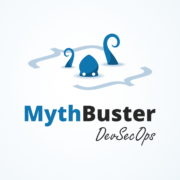
CISO Practical Guide: 10 Steps Every CISO Should Take
Whether you’re charting the course for a robust security strategy or seeking to strengthen your cybersecurity programs, this practical guide for CISOs stands as a beacon of light. And backup is part of a comprehensive security strategy. Test GitProtect.io, DevOps backup and DR solution, for 14 days.
The role of the Chief Information Security Officer, aka CISO, has never been more crucial than ever. This person is at the top of an organization’s security efforts in monitoring and managing its cybersecurity practices and strategies. He is the person who helps organizations be prepared to withstand modern security threats and stay on top of the ever-evolving cyber risks.
In this practical guide, written specifically for CISOs, let’s dive deeper into the importance of CISO’s role and the top 10 CISO best practices they should take to eliminate security threats. But first, let’s look at the threats that they have to deal with for the sake of their organization – let’s speak about application security.
Application security is a must-have
Every 11 seconds there is a cyber attack out there… and the ways attackers implement their skills are becoming more and more sophisticated. Let us remind you about the hacker attack at Okta, Dropbox breach, or Toyota data breach, and the rise of RepoJacking attacks on GitHub users.
According to IT Governance only in October 2023 there were recorded 114 incidents and more than 800K breached records… That’s many. Thus, CISOs should always keep their eyes peeled when it comes to application security. It’s difficult and presents a lot of challenges for them.
Challenge 1: A lack of development background
For many CISOs, application security is uncharted territory. Their expertise often lies in basic security domains, leaving a knowledge void when it comes to the complexities of software development and application vulnerabilities.
Challenge 2: Misunderstanding between devs & security experts
If you like security, does it mean that you like DevOps? For sure everyone should have it’s own place and interests. Thus, cybersecurity experts don’t want to become devs, and developers don’t want to switch to being security gurus. That’s why, security discovers vulnerabilities but often lacks the expertise on how to fix them in the code. So, here appears a place for conflicts between developers and security pros.
💡 Who is a CISO?
Chief Information Security Officers are staying on guard of the organization’s confidentiality, integrity, and availability of the company’s cloud assets. Moreover, their duty is to determine the organization’s security posture, apply appropriate security technologies and security programs to minimize the risks, oversee compliance management, and design the company’s security architecture.
Challenge 3: The economic barrier
Robust application security doesn’t come cheap. From investing in state-of-the-art security tools to hiring specialized personnel, the costs can quickly add up. For many organizations, especially smaller ones, these costs can be beyond their strength. This economic challenge is compounded by the expertise barrier, where the specialized nature of application security requires a unique skill set that might not be readily available within an organization.
Challenge 4: Addressing the threats fast
The traditional model of addressing security concerns reactively is becoming increasingly untenable. In today’s dynamic digital environment, organizations need to anticipate potential threats and proactively embed security measures into the software development lifecycle. This shift requires not just the adoption of advanced tools and technologies but also a cultural transformation. Security considerations must be integral to the development process, ensuring that vulnerabilities are identified and addressed at the earliest stages.
Software innovation calls for security innovation
The digital world is a playground for hackers, who are constantly pushing the boundaries with their innovative tactics; and you need to stay ahead in the hacker’s game in order to thrive. Organizations that lean on outdated security measures from a decade or more ago are playing catch-up. The challenge is clear: How can we evolve at the pace of our adversaries?
This challenge is illustrated by the limitations of legacy app security tools. While these traditional tools were once the pioneers of security, they now struggle to keep pace with the dynamic world of modern software development, especially in the face of practices like DevOps. As the world of software undergoes a rapid transformation, there’s an impending risk of these older tools being overshadowed by the more integrated solutions that cloud and SDLC platforms now offer.
How to transition between security eras?
It’s evident that today’s software ecosystem necessitates a more holistic view of security. It’s no longer solely about protecting the software. The burden is also on ensuring the processes, delivery mechanisms, and the very infrastructure that supports the software are impervious to threats. This evolving scenario beckons a departure from fragmented security solutions, urging us to embrace a more integrated security strategy.
Confronting the app security challenges of today requires a proactive stance. Applications, being at the frontline of cyber warfare, are vulnerable to a range of threats. While there exists a vast repository of established security tools, many of them are a part of a bygone era. With software development evolving at breakneck speed, these tools grapple with integration challenges, often lagging behind the swift pace of change.
The 10 steps every CISO should take
Let’s finally jump at the 10 key steps every CISO should take to ensure their strategic plan works well – the security of its organization and source code is:

Grasp the technical nuances
In the rapidly changing world of technology, a CISO must remain updated on the latest cybersecurity threats and trends. This commitment to continuous learning, through workshops, seminars, and expert collaborations, is crucial. By understanding software vulnerabilities, intricacies of application security, and emerging threats, a CISO can formulate strategies that are both forward-thinking and adaptive, ensuring the organization’s digital assets are safeguarded effectively and information protection is at the highest level.
Prioritize communication
Effective communication bridges the gap between technical teams and senior management. A CISO should be adept at translating complex security concepts into terms that stakeholders at all levels can understand. Regular briefings, reports, and meetings ensure that everyone is on the same page, fostering a culture where security is a shared responsibility.
Embrace proactivity
Reactive measures, while essential, are not enough in today’s cybersecurity landscape. A CISO should anticipate potential threats, regularly update security protocols, and implement preventive measures. This proactive approach minimizes vulnerabilities and ensures that the organization is always a step ahead of potential threats.
Bridge knowledge gaps
The vast domain of cybersecurity means that no one person can know everything. A CISO should recognize areas of personal knowledge gaps and actively seek insights from teams and colleagues. Collaborative reviews, brainstorming sessions, and workshops can provide fresh perspectives, ensuring a holistic approach to security.
Foster collaboration
A harmonious relationship between developers, DevOps, and the security team is crucial. A CISO should promote open communication, encourage joint training sessions, and facilitate collaborative projects. This integrated approach ensures that security considerations are seamlessly woven into the fabric of the development process.
Allocate resources strategically
With limited resources, a CISO must make strategic decisions about where to invest. This involves evaluating the organization’s unique vulnerabilities, understanding the threat landscape, and prioritizing investments in cutting-edge security tools and specialized personnel. Regular budget reviews and cost-benefit analyses ensure optimal resource allocation.
Think critically and into the future
Beyond immediate concerns, a CISO should have a vision for the organization’s long-term security posture. This involves aligning security initiatives with business goals, anticipating future challenges, and developing a roadmap that ensures both security and business continuity.
Manage risks effectively
Risk management is at the heart of cybersecurity. A CISO should regularly assess potential risks, from software vulnerabilities to human factors, and implement strategies to mitigate them. This involves a balance between security imperatives and the need for business agility and continuity.
Stay innovative
The digital landscape is constantly changing, and yesterday’s solutions might not address today’s challenges. A CISO should be open to experimenting with new technologies, methodologies, and tools. Regular evaluations ensure that the organization’s security tools and protocols remain cutting-edge.
Apply Zero-Trust principles
Using the Zero-Trust principle, which assumes never trust, always verify, helps CISOs build a reliable security strategy. Thus, regather of assuming that everything is secure within the company firewall, Chief Information Officers examine each request as if it comes from an open network and expect a breach. Encryption, secure authentication protocols, double-checking of APIs, and backup are important for a company’s data protection.
💡 What about backup?
Backup is a final layer against ransomware attacks and a guarantee that all your data is accessible and recoverable in any event of failure. To be sure that your backup is reliable and secure, your backup solution should contain infinite retention, allowing you to recover your data from any point in time, AES encryption with your own encryption key, ransomware protection, Disaster Recovery Technology, and support the 3-2-1 backup rule.
Read more in our comprehensive backup best practices guides:
📌 GitHub backup best practices
📌 Bitbucket backup best practices
📌 GitLab backup best practices
📌 Jira backup best practices
The future of application security
This guide, written specifically for CISOs, technical professionals interested in cybersecurity, and business and technical professionals alike, emphasizes the non-negotiable nature of application security. It’s not just about understanding threats; it’s about creating a culture where security leadership, risk management, and proactive defense strategies are integral to the organizational structure.
The challenges faced by CISOs, from bridging the gap between development and security teams to maneuvering around the complexities of modern software development methodologies, are manifold.
Moreover, the guide underscores the importance of collaboration, not just within security teams but with executive management, Chief Technology Officers, Chief Privacy Officers, and other stakeholders in the C-suite. It’s a collective effort, where different perspectives converge to ensure robust security measures.
In conclusion, as software continues to dominate the modern world, ensuring its security is crucial. For CISOs and organizations, the time to act is now. With this desk reference guide, they can navigate the challenges, leverage the benefits of collaboration, and fortify their application security practices for a secure and prosperous digital future.
Make your CISO’s life easier, protect your data and secure your work with DevOps backups.
[FREE TRIAL] Ensure compliant DevOps backup and recovery with a 14-day trial 🚀






